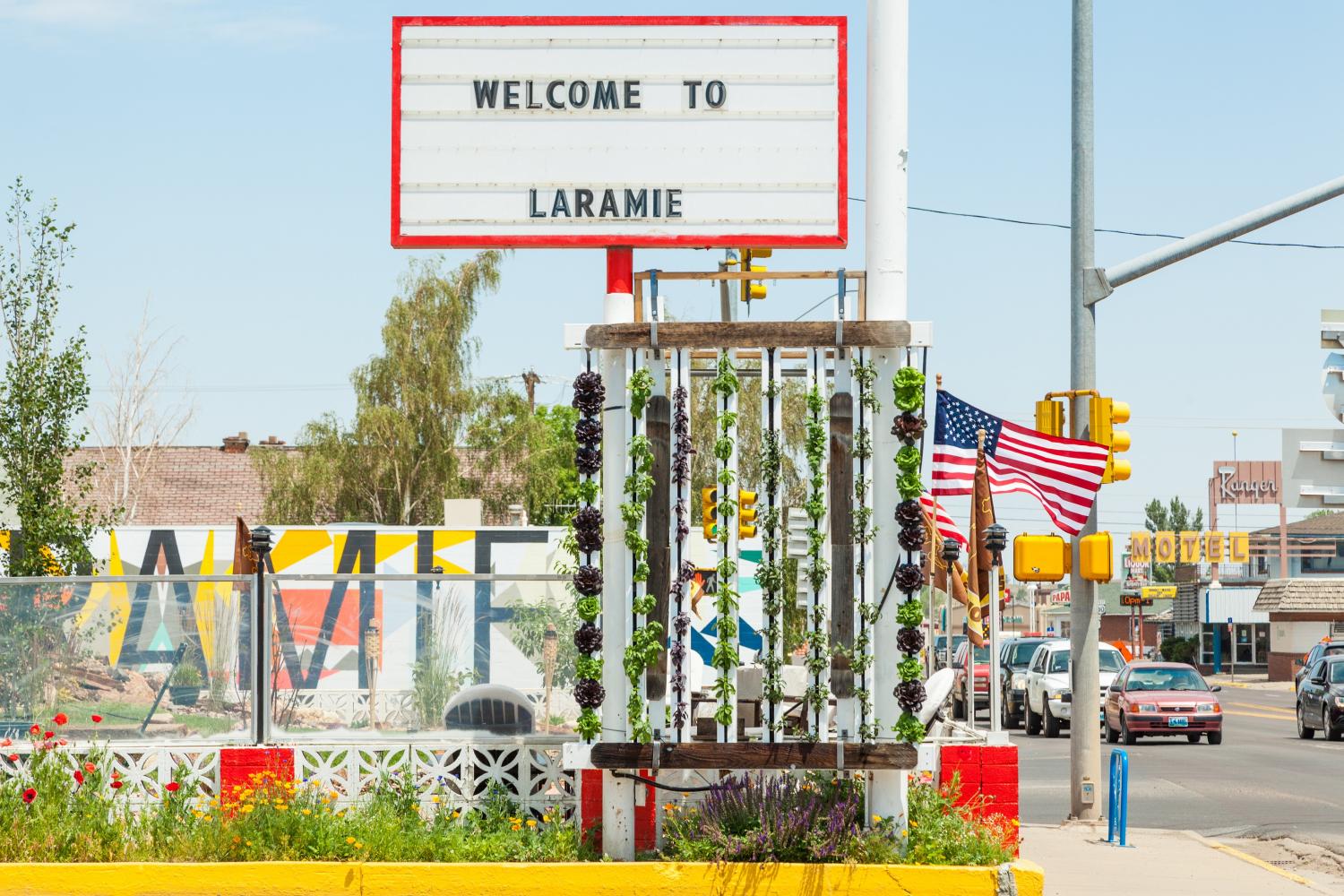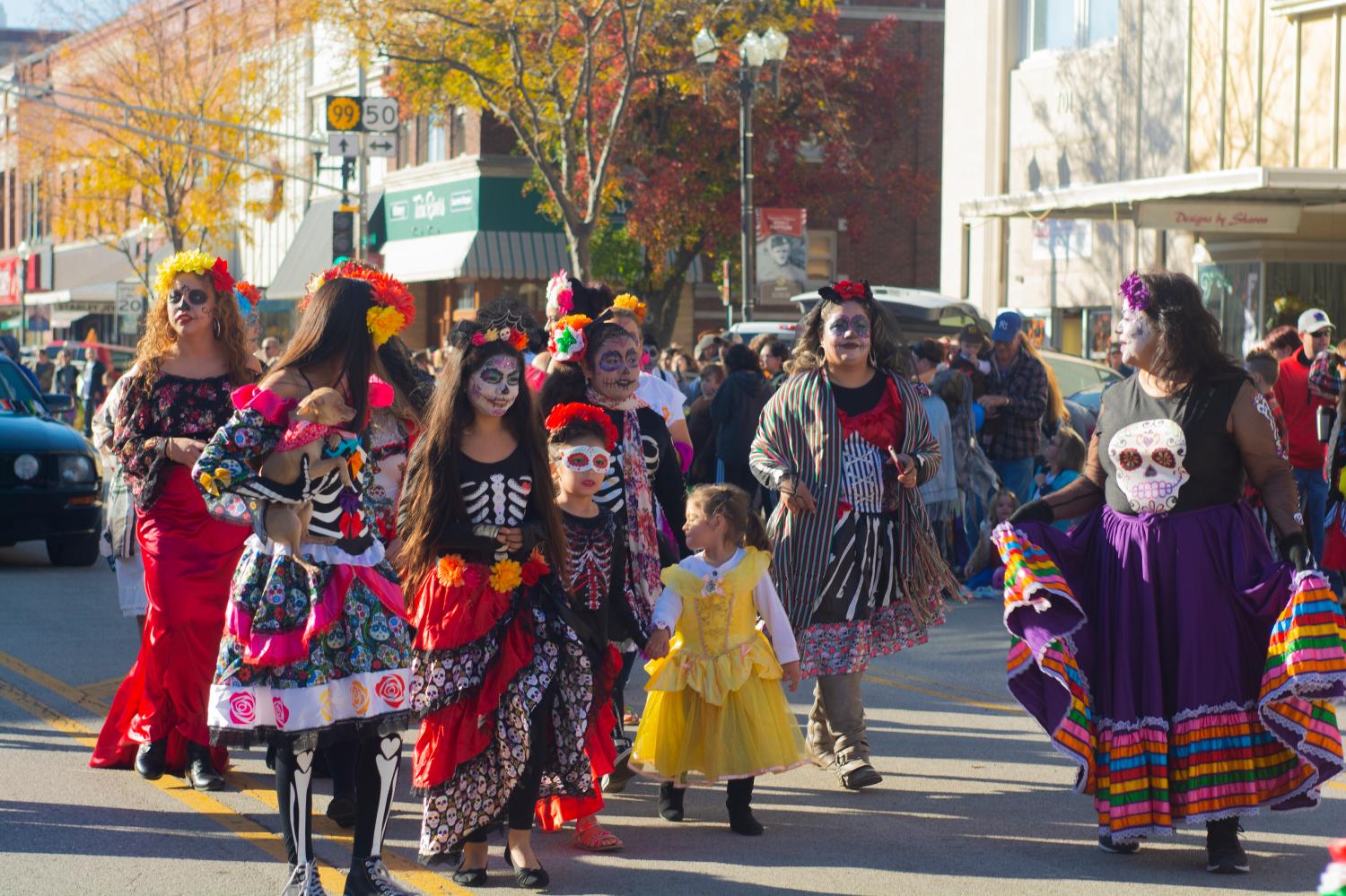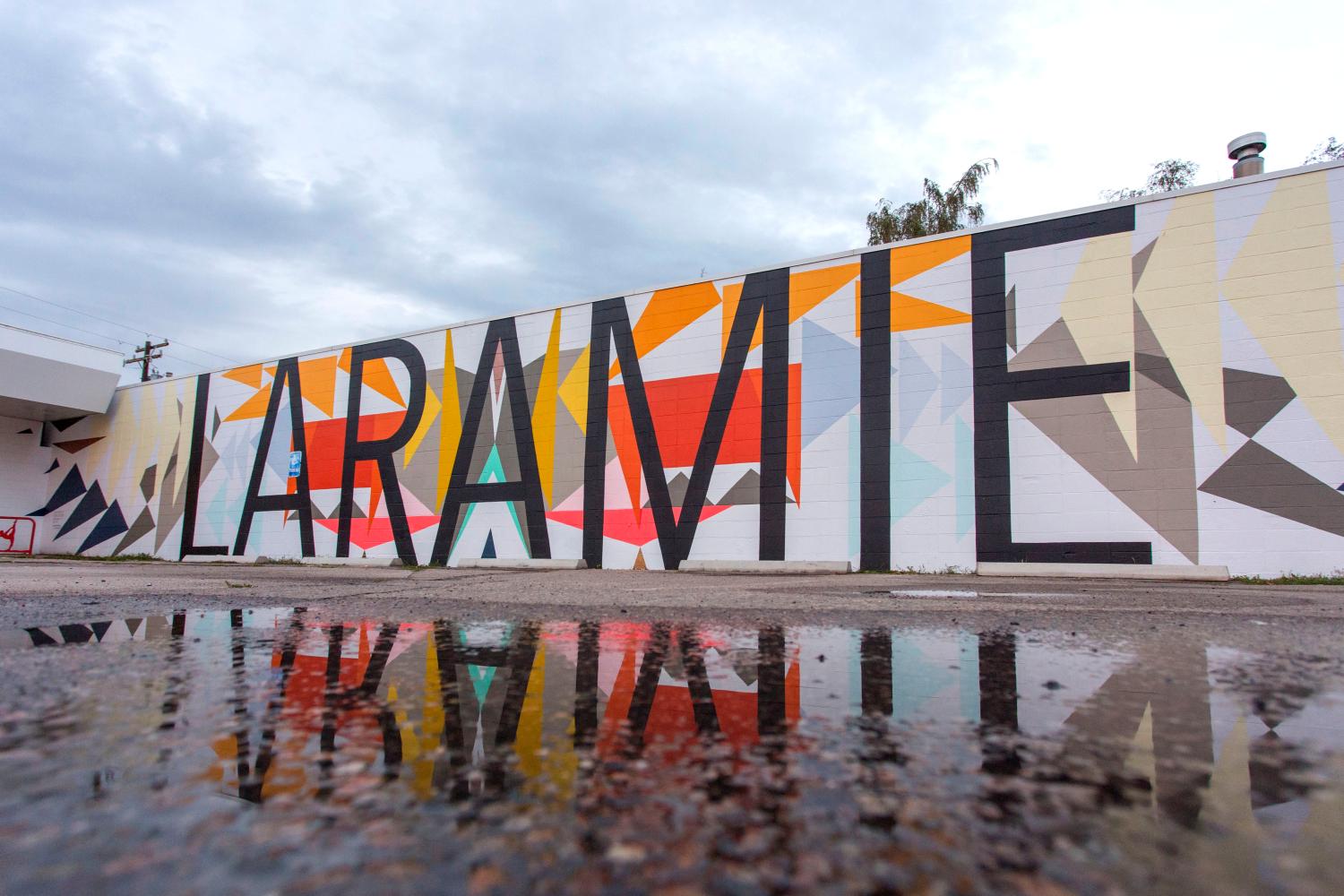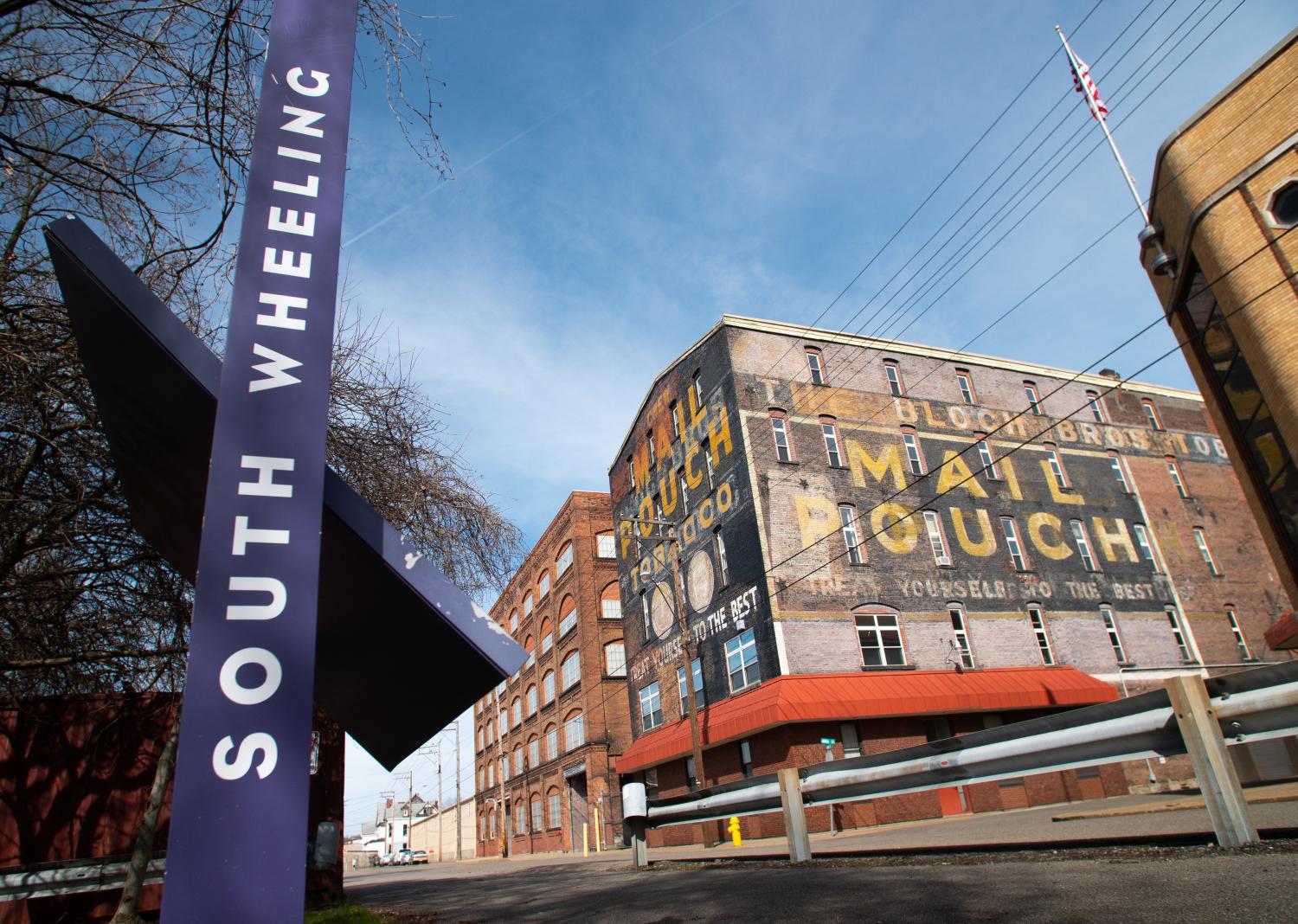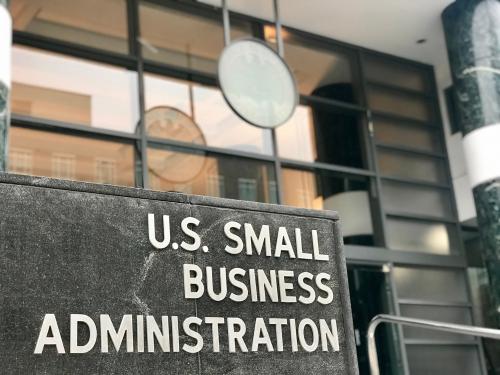This brief is part of a five-part series examining how downtown commercial corridor revitalization can support rural recovery and resilience, and the policy and capacity-building supports needed to enhance and scale these strategies amid the COVID-19 crisis and beyond.
Contents
- I. Introduction
- II. Why vibrant, reflective, cohesive social environments matter for rural resilience
- III. Findings: Can downtown revitalization strengthen and diversify the social cohesion and strong place attachments needed to maintain inclusion and resilience in rural America?
- IV. Conclusion
i. Introduction
The COVID-19 pandemic has exacerbated the economic precarity of rural America. Many rural and small towns were still struggling to recover from the last recession, and are now fighting for economic survival amid this one. As these communities grapple with unprecedented job losses, small business closures, and crumbling infrastructure, their recovery requires coordinated relief first and foremost.
Alongside that imperative lies another critical ingredient of rural resilience: the need to scale homegrown rural economic development strategies that were showing promise prior to the pandemic. As we demonstrate in this five-part series, rural downtown revitalization has the potential to be one such strategy. In recent years, some rural communities experienced economic revival by strengthening community assets and locally owned small businesses in downtown commercial corridors. To be successful, however, these efforts must not only invest in small businesses and built environment improvements, but also foster vibrant, reflective, and cohesive social environments where existing residents want to stay and new residents want to live.
As COVID-19 threatens rural America’s economic future and upends social life as we know it, this imperative has taken on added significance. Many rural communities were already grappling with depopulation prior to the pandemic and rely on demographic diversity and immigration to spur revitalization.
Drawing from on-the-ground research conducted in three rural communities just prior to the COVID-19 outbreak in the United States, this brief examines the extent to which rural downtown revitalization efforts have been successful in fostering social assets that nurture racial and economic inclusion, reflect community identity, and enhance residents’ attachments to place. We highlight key lessons learned for other rural communities, and point to the policy and capacity-building supports needed to sustain, improve, and scale strategies amid the COVID-19 recession and beyond.
|
Methods: Examining the intersection of downtown revitalization and social well-being in rural America
The Brookings Bass Center for Transformative Placemaking and the National Main Street Center conducted on-the-ground research in Emporia, Kan., Wheeling, W.Va., and Laramie, Wyo. It consisted of in-depth interviews with 62 residents, business owners, and other key stakeholders, as well as four supplemental focus groups with residents and entrepreneurs between February and March 2020. For a full description of our mixed-methods and approach, see “Why Main Streets are a key driver of equitable economic recovery in rural America.”
Overall, we examined the effectiveness of downtown revitalization strategies on four key outcomes of community well-being, including economic, built environment, social, and civic outcomes. This brief focuses on social outcomes. We operationalized social well-being using the Bass Center’s transformative placemaking framework, contending that rural downtown revitalization should foster social environments that are:
1. Vibrant: Cultivating an engaging public realm animated by a range of activities and programming 2. Reflective: Representing the distinct cultural and historical identities of the community and facilitating a shared sense of ownership and attachment 3. Cohesive: Promoting social interaction and trust among diverse groups of residents, workers, business owners, and other community members |
ii. Why vibrant, reflective, cohesive social environments matter for rural resilience
First and foremost, rural communities require access to economic opportunity and a reasonable quality of life to thrive. Yet there are other important factors that enhance community well-being and residents’ connection to place. This is especially true in rural areas, where community connections, social networks, and location-specific amenities have been found to nurture strong place attachments even absent upward economic mobility.
Investments in place—from increasing the number of public spaces to actively programming the public realm—are proven tools for enhancing place attachment and achieving economic development. In the urban context, these place investments have been found to either encourage cohesion and bridge divisions across race, class, gender, and community tenure, or, if they fail to meaningfully center equity at their core, exacerbate divisions and distrust between new and longtime residents. Given this balance, much attention has been paid to the need to center equity in urban place investments—but less has been written about this imperative for rural areas.
Perhaps this is because the dominant media portrayals of rural America still cling to the notion of white, homogeneous communities. In reality, rural areas rely on racial diversity for population growth and economic success. People of color comprise 21% of the total rural population, generated 83% of rural population growth between 2000 and 2010, and have continued to drive population growth in the years since, with Latino or Hispanic migration rejuvenating many small towns.
Media portrayals also reinforce the perception that rural areas are socially tight knit communities, potentially leading to the misconception that focused efforts to foster social cohesion are not needed. While research does identify strong social connections as a valuable asset of rural areas—correlated with increased participation in volunteering, community organizing, and coalition building for homegrown programs and practices—it also finds that highly bonded rural communities can in some cases breed localism, elitism, and mistrust of outsiders. In many rural areas, dark histories of inequity and racial discrimination, including legacies of slavery, Jim Crow laws, and the decimation of Native American populations, have had a lasting impact on the present-day culture and on the connections that residents feel to each other and to the place where they live.
These cultural divisions have been exacerbated by contemporary socioeconomic disparities for people of color in rural regions. Latino or Hispanic immigrants remain concentrated in low-wage jobs (agriculture, meatpacking plants, construction, oil, timber, and other manufacturing), while Black Americans in the rural South face persistent structural barriers to economic mobility compounded over generations. These factors inhibit social cohesion and diminish the place attachments of rural Latino or Hispanic and Black residents. The need to bridge social divides across race, ethnicity, and income is thus just as pressing in rural areas as it is in urban communities, and efforts to bolster economic revitalization in rural America cannot afford to ignore the spatial patterns of social and economic exclusion that threaten community vitality during COVID-19 and in the years to come.
There is undoubtedly a moral imperative—as well as concrete economic benefits—to bridging these social divides. Research indicates that enhancing social cohesion in rural communities contributes to small business success, that the presence of locally owned businesses within communities can, in turn, increase social capital, and that higher levels of social capital are correlated with higher levels of upward economic mobility for rural residents.
Local organizations—including Main Street programs, community development corporations, and other economic development nonprofits—have been working for decades to encourage place investments downtown that foster social vibrancy alongside economic opportunity. Yet despite the widespread adoption of downtown revitalization efforts, relatively little is known about their effectiveness in promoting social well-being, particularly for residents of color and low-income residents. Even less is known about how rural downtowns might nurture social cohesion amid acute economic crisis.
|
A snapshot into the diversity of rural America
Nationally, people of color comprise 21% of the total rural population. Our three case study communities demonstrate how diversity varies across regions, and reinforce the reality that there is no monolithic “rural community.”
Wheeling, W.Va.: As a former industrial center and retail hub, Wheeling has been struggling with depopulation (down 43% since 1970) since the decline of its manufacturing industry. The majority of Wheeling residents are white; 6% of its population is Black, and Black residents face significant structural barriers to opportunity—including being concentrated in historically disinvested downtown-adjacent neighborhoods and experiencing considerable disparities in income and wealth (37% of Black Wheeling residents live in poverty).
Emporia, Kan.: Home to Emporia State University and a Tyson meat-processing plant, Emporia has the greatest Latino or Hispanic population of the study communities (27% of the population), the lowest median income ($39,063) compared to the other study communities, and has experienced slight population decline in recent years (standing at 24,000 residents in 2018). Black and Native American residents in Emporia also face significant structural barriers to opportunity, including considerably higher poverty rates, high rental costs relative to income, and diminished food access.
Laramie, Wyo.: Despite being home to the University of Wyoming, Laramie is one of the poorest communities per capita in the state. It is a predominantly white community, and its Native American and Latino or Hispanic residents face strikingly high poverty rates compared to their white peers. Unlike many rural areas, Laramie has witnessed small population growth in recent years, and was home to 32,000 residents in 2018.
|
III. Findings: Can downtown revitalization strengthen and diversify the social cohesion and strong place attachments needed to maintain inclusion and resilience in rural America?
To understand how downtown revitalization contributes to social cohesion and attachments to place in rural areas, we interviewed 62 residents, small business owners and other key stakeholders, and conducted more open-ended focus groups with small businesses and residents. Our findings reveal both the promise and potential perils of rural revitalization strategies, indicating a significant need to center equity in the months and years to come.
Finding #1: Downtown revitalization can foster vibrant rural places where people want to live and stay—but COVID-19 puts this at risk.
Our findings on residents’ attachment to place reveal a promising conclusion, particularly for rural communities struggling with depopulation: Place-based investments to cultivate an activated, vibrant public realm downtown seemed to be successful in strengthening residents’ attachment to their community. When we dug a little deeper into what drove these perceptions, three primary strategies emerged—but they require adaptation amid COVID-19 to continue their aims.
- Cultivating rural downtowns as hubs for events, third spaces, and programming can increase residents’ pride in their communities: Prior to COVID-19, Main Street organizations in all three communities made year-round events and regular programming key components of their downtown revitalization strategies. This included small-scale events such as farmers markets, “shop local” days, concerts, and meet-and-greets, as well as large-scale regional events. Emporia, in particular, had success in hosting large-scale events, including a gravel bike race and disc golf tournament that bring in thousands of visitors from surrounding states each year. One Emporia resident said of the bike race, “It’s gratifying to listen to the people in the community say, ‘This is a wonderful event, it makes me proud to live here’…Because for a number of years, I don’t think anybody would have said, ‘Oh, I feel proud to live here.’ Things like that have created a pride that maybe was lacking or missing or had gone underground before.” Main Street organizations supplemented these activities with concentrated efforts to increase the number of permanent “third places” downtown, which contributed to a renewed sense of vibrancy for residents and helped boost the experiential economy for visiting tourists. One Laramie resident told us, “When I moved here in ’95, we’d come down here at night and there were certain blocks that you just avoided because they were dark and scary and there were no people. They’ve been successful over the last 10 years in really activating all the spaces, so every part of downtown seems to be pretty vibrant.” But today, COVID-19 is threatening the viability of these strategies, as all three communities have canceled events and gatherings, the tourism economy has plummeted, and the locally owned small businesses that served as third places for residents are at heightened risk of closure.
- Concentrating arts downtown can attract younger residents and put them in conversation with long-term residents: As part of their downtown revitalization strategy, each community also made efforts to increase the market rate housing stock downtown (see “The necessary foundations for rural resilience: A flexible, accessible, and healthy built environment” for more detailed information on this strategy). A critical component for getting people to want to live in these places was to anchor arts, culture, and entertainment downtown—attracting young people in particular to move into new housing units. This included efforts such as supporting downtown artist spaces, theater renovations, mural projects, interactive art installations, and regular artists markets. Creative placemaking played a central role in making downtowns more attractive to younger residents and accomplished the dual function of putting newcomers in conversation with long-time residents. “Our graduates want to move downtown afterwards,” one Laramie stakeholder said. “It’s because of the proximity of being able to pop downstairs and snag something to eat or something to drink or walk down the street and find community partners and go from there. And a lot more emphasis on art. The [Laramie Mural Project] has been phenomenal. In building this larger culture of innovation and creativity, I feel like the mural project has really been a galvanizing moment for Laramie to define what we are and what we value in the form of inclusiveness and creativity.” Across all communities, creative placemaking and arts engagement were described as important factors in bringing residents in connection with each other. As one Wheeling volunteer said, “We found that people were most interested in art that is happening here—the ability to meet artists from this region, interact with them, and make something of their own as part of that event.”
- Fostering a commitment to shopping local enhances residents’ connection to their community: To combat competition with big-box retailers and online suppliers, Main Street programs in each community launched “shop local” strategies. These included co-locating a shop for locally owned retailers within Main Street office spaces, holding local crowdfunding competitions to increase community investment in local entrepreneurs, developing partnerships with regional economic development entities to market local retailers, and running targeted social media campaigns. These efforts encouraged residents to take collective ownership in supporting their neighbors’ businesses. As one Laramie stakeholder told us, “It’s hard to quantify the social benefit that you have from having this really tight-knit group that shows up to everything, that volunteers for one another, that shop at each other’s stores, that are committed to shopping at each other’s stores even if it might cost you a dollar more to buy your groceries downtown, knowing that that’s more valuable to our community than shopping at Safeway.” Main Street organizations have adapted these shop-local strategies during the pandemic, with some starting “Shop Local from Home” campaigns and helping local small businesses attract customers virtually.
Finding #2: Long-standing divisions persist despite downtown revitalization efforts, and will require focused attention as rural communities look toward recovery.
When we examined residents’ perceptions of whether the benefits of downtown revitalization had reached the community at large, we found that significant barriers to inclusion persisted. Across all three communities, respondents reported economic disparities between downtown and adjacent neighborhoods, lingering distrust between public officials and some underrepresented residents, and the need to embed more affordable options downtown. While these barriers reflect significant harms that predate downtown revitalization, they also indicate the need for coordinated effort across sectors and in partnership with community leaders to tackle these disparities head-on. Three primary themes emerged, as well as some insights on how to address them:
- New public and private investment downtown can magnify the stark disinvestment in adjacent low-income communities, indicating the need for greater collaboration and inclusive engagement across district lines: In all three towns, respondents drew stark comparisons between the renewed sense of vibrancy downtown and nearby communities suffering from high poverty rates, crumbling infrastructure, and chronic disinvestment. One stakeholder in Emporia described a “tale of two cities” between downtown and the south side of Emporia, where Latino or Hispanic residents predominantly live. In Wheeling, stakeholders repeatedly juxtaposed downtown redevelopment with the economic exclusion facing the historically Black neighborhood of East Wheeling, which is adjacent to downtown. Said one stakeholder: “East Wheeling is just the perfect example, just like If you take a drive up there, up 14th and 15th, there’s Good Mansion Wines, that is like a very upscale wine and cheese import shop, that’s lovely. And then, three or four houses up, there a shelter…There’s several shelters in East Wheeling.”
New investment in downtown Wheeling heightened distrust with residents of color who had experienced community destruction at the hands of city officials. “We did lose a lot of architecture, but it was a lot of architecture in a historically African American community,” said a Wheeling public official. “If you talk to folks in the neighborhood now, there’s still some hard feelings about that…You talk to folks and they feel like, ‘My community wasn’t valued, it was leveled for a sports field.’”
In Laramie, the distinction between downtown and the highly disinvested parts of West Laramie (which lacks some modern infrastructure, such as paved roads) was made even starker by geographic divisions. “You’ve got a huge railyard through the middle of town that separates these two, just literally, physically,” said one stakeholder. “You’ve got the interstate, and there’s just some sort of mental barriers that are really hard to overcome…I’m not sure you ever really will.” While downtown redevelopment did not create these disparities, they indicate the need for greater collaboration with residents across district lines, more inclusive engagement processes to ensure residents in adjacent neighborhoods have the opportunity to take partial ownership over downtown strategies, and more robust partnerships with city officials to ensure that residents in nearby neighborhoods are benefiting from revitalization.
- Retail and experience-based strategies can exclude low-income residents, so downtown revitalization efforts should also provide free and welcoming alternatives: Another challenge that emerged was not necessarily unique to rural areas, but was magnified by high poverty rates within the three case study communities: Many respondents felt the new downtown improvements required a certain income level to benefit from, and were exclusionary to people experiencing poverty. In Wheeling, a stakeholder described downtown residents as “firmly middle-class, educated job holders, whatever you want to call them.” The new public market downtown faced pushback from residents, illustrated by many comments such as: “One of my questions when the public market opened up was, ‘This is great. Your prices are high. How are you justifying that for the population you’re trying to serve?’” One Laramie resident said, “I don’t necessarily think you have to have a certain income level to shop downtown, but I do think that that’s one of the drivers for people maybe shopping downtown versus shopping online, or at whatever big-box store.” These income divisions were heightened by the presence of new lofts within the districts, which created a clear divide between new middle-class downtown residents and low-income residents. Main Street organizations were working to address these perceptions by hosting free events downtown and coordinating with city officials to increase the number of public spaces there. However, these findings indicate the need for concentrated efforts to permanently increase the number of inclusive community spaces to reach those who are often excluded.
Finding #3: Strategies for bridging economic and racial divides in rural communities must be scaled and adapted to local context for a more equitable recovery.
City officials, local Main Street programs, and residents in the three study communities were well aware of the inclusion challenges accompanying downtown revitalization, and were attempting homegrown strategies to tackle them. From our research, promising strategies from Emporia emerged. However, communities should supplement such strategies with national best practices.
- Formal partnerships between place governance organizations, city officials, and minority-led community organizations can plant the seeds of trust and inclusion: In Emporia, the Main Street organization had been working to formalize partnerships with community groups representing Latino or Hispanic residents, co-host events with them to welcome Latino or Hispanic residents downtown, and identify Latino or Hispanic grantees for small business loans to increase the number of minority business owners downtown. The most promising aspect of this strategy was the concrete financial assistance provided to Latino- or Hispanic-owned businesses, as it provided tangible results residents could see and benefit from. “It’s been 46 years since I’ve been here and it’s grown very diverse,” a Latino or Hispanic community organization representative in Emporia said. “When I first moved here, there were very few minorities. But since, downtown has brought in more diverse businesses—more Hispanic restaurants, stores…Just within the last few years, Main Street has loaned out to Hispanic businesses—they wouldn’t have been able to open without that.” These initial successes indicate that increasing the number of minority-owned small businesses downtown and partnering with minority-led community organizations can be promising for fostering more inclusive places. In the long term, stakeholders should pay more deliberate attention to scaling these strategies. This will be especially critical as minority-owned and -led rural small businesses face heightened vulnerabilities amid COVID-19.
- Rural downtown revitalization efforts should enhance inclusion strategies with national best practices: For decades, communities across the nation have piloted strategies to center equity and inclusion at the core of revitalization. These efforts must be tailored to rural communities’ unique contexts, but include strategies like community-led equitable development plans, efforts to physically connect adjacent neighborhoods, tools and processes to identify exclusionary social dynamics in public places, inclusive place management practices, trust-building efforts to revitalize abandoned properties in disinvested neighborhoods, and efforts to leverage historic and artistic assets to preserve community control of land. While some may be tempted to delay these strategies amid the financial and public health crises of COVID-19, they are more critical now than ever for supporting long-term resilience.
iv. Conclusion
Both rural and urban places rely on their social fabrics to build places of opportunity. This was true even in the early days of the pandemic, as mutual aid groups, newly formed neighborhood response teams, and community organizations emerged to meet community needs when no one else could. And it will remain true as the pandemic subsides.
As we demonstrate in this five-part series, local leaders are not only striving to strengthen social cohesion and bridge divides between neighbors, but are also implementing holistic strategies to build rural resilience in the months and years to come. This includes ensuring the survival of small businesses, championing built environment and quality-of-life improvements, and nurturing new civic structures to advance community priorities. As the nation strives to promote a more equitable economic recovery than the last, it is critical to recognize the value of this work and support rural community leaders to tackle place-based inequities and foster inclusive, vibrant, and connected rural places in the long term.
The Brookings Institution is committed to quality, independence, and impact.
We are supported by a diverse array of funders. In line with our values and policies, each Brookings publication represents the sole views of its author(s).


